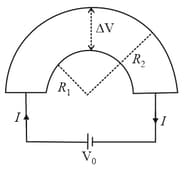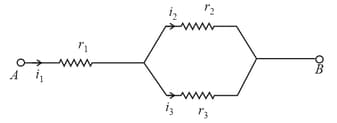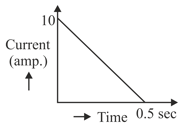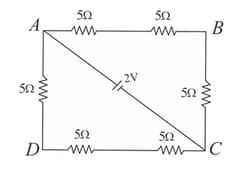A copper rod of cross-sectional area carries a uniform current through it. At temperature , if the volume charge density of the rod is , how long will the charges take to travel a distance ?
Important Questions on Electricity
Consider an electrical conductor connected across a potential difference Let be a small charge moving through it in time . If is the electric current through it,
(i) the kinetic energy of the charge increases by
(ii) the electric potential energy of the charge decreases by .
(iii) the thermal energy of the conductor increases by .
Then the correct statements is/are
The current flowing through a wire depends on time as The charge flowing through the cross section of the wire in time from to is
A conducting wire of length , area of cross-section and electric resistivity is connected between the terminals of a battery. A potential difference is developed between its ends, causing an electric current. If the length of the wire of the same material is doubled and the area of cross-section is halved, the resultant current would be___
A heating coil of resistance takes to boil certain amount of water. If a similar heating coil is connected in series with the heating coil, then the time required to boil the water is , while time is required to boil the same amount of water if the coils are connected in parallel. What will be ?
Shown in the figure is a semicircular metallic strip that has thickness and resistivity . Its inner radius is and outer radius is . If a voltage is applied between its two ends, a current flows in it. In addition, it is observed that a transverse voltage develops between its inner and outer surfaces due to purely kinetic effects of moving electrons (ignore any role of the magnetic field due to the current). Then (figure is schematic and not drawn to scale)

Three resistors having resistances and are connected as shown in the given circuit. The ratio of currents in terms of resistances used in the circuit is :

In an atom electron revolve around the nucleus along a path of radius making revolutions per second. The equivalent current is [Given ]
In a coil of resistance , a current is induced by changing the magnetic flux through it as shown in the figure. The magnitude of change in flux through the coil is:

An electric cable having a resistance delivers of power at to a factory. If the efficiency of transmission is , then what is the value of ?
The potential difference between points and of adjoining figure is


